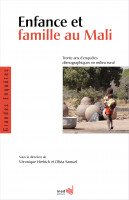
@@src2@@
Maghreb, Morocco, Marrakech: Demographic convergence, socioeconomic diversity
Population and Societies
n° 459, September 2009
Against a background of rapid population growth, the countries of the Maghreb - Algeria, Morocco and Tunisia - have undergone radical change over the last 30 years. Although at different stages of economic development, all three countries have experienced closely parallel trends of fertility decline, increasing life expectancy and urban growth, suggesting that developments in health and the family are relatively independent of the socioeconomic context.


























